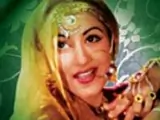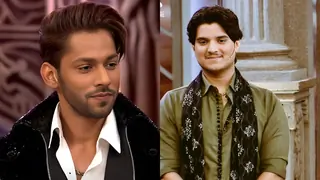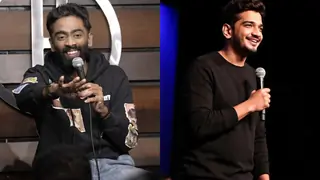You might think that Durga Khote, Madhubala and Shabana Azmi have one thing in common: all leading actresses of their time. They certainly are that, but they are something even more important: they are all path-breakers, each in their own way, each a symbol of cinema's new directions. Khote was the pioneer. In the early 1930s when she went into films, she made her first impact just by being there: cinema had an uncertain reputation, even a dodgy one, so that when Dadasaheb Phalke made Raja Harishchandra, he had to cast a man in the role of Rani Taramati. While gradually women's roles began to be played by women, film acting was not considered a suitable profession for girls from "good families".
And then came Durga Khote, upper- crust Brahmin from upper-crust family, educated at Mumbai's elite Cathedral School, taking up cinema grease-paint instead of genteel matrimony. Appropriately, her first important role was of Rani Taramati, in V. Shantaram's remake of the Phalke film (1932).
Her background made it suddenly acceptable for other women from a similar social milieu to think of a film career. Not only that, her presence and bearing and the confidence a privileged upbringing bestows, made it possible for directors to think of movies featuring dominant women. A still from Maya Machindra which she made for Prabhat Studio around the same time, shows her dressed as a warrior queen in armour, sword in hand, crown in place, a cheetah at her feet, the martial effect softened by the presence of elaborate jewellery.
The warrior queen image wasn't just play acting. The story is told of a shoot in Kolhapur in 1935 featuring lions. One of these went out of control, pounced on a minor actor and began clawing his shoulder, whereupon Durga Khote caught the animal by its mane and struggled with it till its trainer arrived on the scene.
Perhaps inspired by such real-life bravado, directors like Shantaram began to make films with heroines who really were heroines, like the 1936 Amar Jyoti where Khote played a wronged wife, wreaking terrible vengeance on her tormentor. Her last film in this mould might have been Acharya Atre's 1941 Charnon Ki Dasi, but she was by no means finished with cinema, embarking on a second innings when she played character roles, often the good mother to Lalita Pawar's bad mother-in-law. Her most famous essay in this phase was as the Queen Mother in Mughal-e-Azam.
Mughal-e-Azam is, of course, remembered as Madhubala's film. Not just because it was her finest achievement as an actress, but because her role had so many parallels with her own life: childhood spent in poverty followed by a satisfying recognition of her abilities. And then the love affair doomed by patriarchal opposition. That her thwarted lover in the movie was played by Dilip Kumar meant that they were not play-acting but living out their real-life drama. And the death sentence imposed on her dancing-girl character of Anarkali by Emperor Akbar too had a tragic echo: Madhubala knew then that she had an incurable heart disease which would give her only a few more years to live.
But -- and this is a quality Madhubala has in common with Durga Khote and Shabana Azmi -- in spite of her tragic life, she was no victim. She so easily could have been. Take the ingredients of her life story and you have a fillum tear-jerker: the poor family of 11 children, her singular beauty and desperation persuading her orthodox father to put her into films. When she became famous (and rich), the whole family tagged along to share in her prosperity. Her father opposed her marriage to Dilip Kumar, it is said, not on grounds of community or religion -- both were Muslim -- but because the bread (and cake) winner would be lost forever.
It is also said, but there is no way to corroborate this, that Madhubala's medical treatment was delayed because news that she was seriously ill would have affected her career. Yet her trademark smile deserted her only when she was laughing. Her giggling fits on the set were notorious. This is perhaps why she displayed such a talent for comedy in Chalti Ka Naam Gaadi, Half Ticket and Mr & Mrs '55 and also why she married Kishore Kumar.
Marilyn Monroe was a contemporary of Madhubala and both stars shared more than just the letter M. They were glamorous, had a tragic personal life culminating in early death and a paradoxical flair for film comedy. Above all, both possessed that improbable combination of utter and complete sensuality with utter and complete innocence. (The only star of today who has this quality is another M -- Madhuri Dixit. But she is a product of our times and mercifully there is no tragedy in her life).
Monroe, though, was a victim. Madhubala wasn't. Whether it was a film project or her latest romance, it was she who took the initiative and usually got her way. For the dozen years or so that she dominated Hindi cinema from Mahal to Mughal-e-Azam she was more her own capricious woman than people imagined. Towards the end she had even taken up direction (Farz aur Ishq) in order to have complete control over a film.
Meanwhile, the seeds for a change from romanticism were being sown. When films influenced by the Italian Neo-Realism and the French Nouvelle Vague were shown in festivals in India, they had an immediate impact. People like Satyajit Ray saw what the medium could achieve while students like Shyam Benegal were inspired to start film societies in their colleges. His films introduced actors like Naseeruddin Shah, Om Puri, Smita Patil and Shabana Azmi.
The remarkable thing about Azmi's has been that even when playing exploited women (Ankur, Nishant, Fire) her characters managed to assert themselves. This emerging feminism became an intrinsic part of much of the New Cinema movement of the '70s and the '80s.
When we look at the careers of Durga Khote, Madhubala and Azmi, we find that in all three, their screen persona merged with their real personalities: Khote, playing the warrior queen on the screen, battles with a real lion on the sets; Madhubala as Anarkali accepts from Prince Salim played by her real life prince a prize of thorns for winning a singing contest. And Azmi, in a defining moment, playing Godmother, as strong a woman as you could get, and in real life playing a battling, if benign, godmother to a whole slew of causes, culminating in a seat in the Rajya Sabha where she gives voice to them.
Anil Dharker is a Mumbai-based columnist.
























